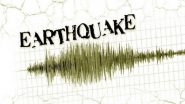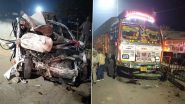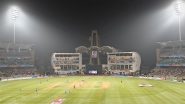Canberra (Australia), Nov 9 (AP) Wildfires razing Australia's drought-stricken east coast have left two people dead and several missing, more than 30 injured and over 100 homes destroyed, officials said Saturday.
Around 1,500 firefighters were battling 70 fires across Australia's most populous state, New South Wales, with the most intense in the northeast where flames were fanned by strong winds, Rural Fire Service Commissioner Shane Fitzsimmons said.
Firefighters found a body on Saturday in a burned car near Glen Innes, he said.
A woman who was found on Friday unconscious and with serious burns near Glen Innes had died in hospital, he said.
Another seven people have been reported missing in the vicinity of the same fire.
"We are expecting that number (of missing persons) to climb today," Fitzsimmons told reporters.
"There are really grave concerns that there could be more losses or indeed more fatalities."
More than 30 people including firefighters received medical treatment for burns and one patient had a cardiac arrest, he said.
At least 100 homes were estimated to have been destroyed since Friday, but that damage toll could rise significantly as firefighters were able to extinguish flames and access fire zones, Fitzsimmons said.
Hundreds of people evacuated their homes along a 500-kilometer (310-mile) swathe of the eastern seaboard from the Queensland state border south to Forster.
Forster is a town 300 kilometers (190 miles) north of Sydney, Australia's largest city.
Many spent the night in evacuation centers while some slept in cars.
"I think the problem with that area of mid-north coast is it was several fires, and they were all impacting on communities at the same time," Fitzsimmons' deputy Rob Rogers said.
"So firefighters were torn between trying to send help to one fire or another."
More than 300 people evacuated overnight to a social club in the town of Taree, including Club Taree's chief executive Morgan Stewart.
"It was pretty scary," Stewart said. "We're hearing lots of stories of lost houses, lost property, goods and effects, animals, land. It's going to be horrific, I think."
Peter Lean spent the night on the roof of his house in the town of Wallabi Point, extinguishing burning embers carried on strong winds.
"I've never seen the sky so red since 2000," Lean said. "We've got winds blowing, they're circling, it's like a cyclone."
The fire danger reached unprecedented levels in New South Wales on Friday, when 17 fires were burning at the most extreme danger rating known as the Emergency Warning Level.
"I can only recall a figure of less than 10 that we (previously) got to, which was an extraordinary event in years past," Fitzsimmons said.
"The fact that we have 17 at once yesterday and another nine burning at Watch and Act (Level) is a magnitude that we simply haven't seen before, commanding so much attention, so much priority, so much competition for resources and need to get to different communities," he added.
Only two fires were burning at the highest danger rating by Saturday.
Less destructive fires were blazing in other Australian states.
The annual Australian fire season which peaks during the Southern Hemisphere summer has started early after an unusually warm and dry winter. (AP)
(This is an unedited and auto-generated story from Syndicated News feed, LatestLY Staff may not have modified or edited the content body)













 Quickly
Quickly




















